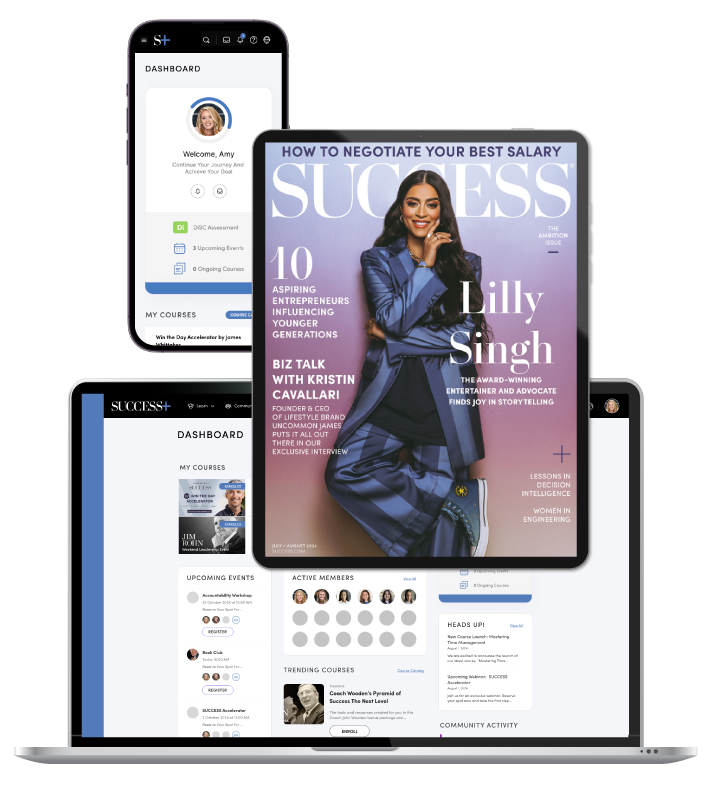Life is a never-ending cycle of striving to accomplish more in a shorter amount of time. Perhaps this is the true American dream.
In today’s life-in-the-fast-lane world, we all have relentless to-do lists of professional responsibilities and home chores that demand attention. Unfortunately, we can’t add more hours to the day to complete them, but we can better manage our days to cross everything off our lists more efficiently. That’s where productivity hacks come into play.
An increase in productivity—or the amount of work you complete during a set period of time—is often associated with career advancement and both business and personal success. However, its other desirable outcome is a healthier work-life balance. The less time you spend typing at your keyboard or crunching numbers, the more time you can spend on passion projects, hobbies or with family and friends—proof that productivity goes beyond simply churning out projects like some sort of corporate machine.
What Are Productivity Hacks?
Productivity hacks aren’t just quick-fix cheat codes. A slew of factors affect the workload you’re able to fulfill. This could be anything from training, organization and company culture to personal focus, environment and technology access. Productivity strategies help you better control these factors and prioritize tasks to avoid procrastination and possible burnout. Essentially, they encourage a work smarter, not harder approach.
Productivity hacks often involve technical tools and practiced techniques. They also encompass habits and lifestyle changes, such as following a routine or getting enough sleep to improve concentration and reduce stress.

The path to boosted productivity won’t look the same for everyone. To find what works for you, you must first evaluate your work style, strengths, weaknesses and output barriers. From there, you can identify the methods that suit your workflows and goals.
Tools to Boost Productivity
Technology is your friend when it comes to productivity. Use productivity apps and online platforms to organize, automate, prioritize and streamline tasks. The tools you end up utilizing will be personalized to your unique needs. However, the following options are a great place to start, and they apply to most industries and positions.
Project Management Software
- Trello: Visual learners unite on Trello’s project-tracking platform. The tool breaks down projects into boards and cards with clear due dates, checklists and contributors for easy collaboration.
- Asana: Ideal for larger teams, Asana separates projects into boards where a timeline of tasks and subtasks can be managed. The platform is also known for its multiple view options, including a “My Tasks” section, notifications inbox, list views and calendar views.
- Zapier: Automate recurring tasks and more mindless operations with Zapier. The tool connects thousands of applications so you can do things like automatically create a task in Asana when a meeting pops up on your Google calendar.
Note-Taking Apps
- Notion: Notion is a great place to not only jot down notes, thoughts and ideas but also turn them into tasks and project plans. Plus, one of its best features is that it’s highly customizable.
- Evernote: As a web, desktop and mobile app, Evernote moves with you across devices, allowing you to easily organize notes and info at home, work or on the go.
- Fireflies: Like magic, the Fireflies AI assistant transcribes entire meetings (on Zoom, Google Meet, etc.) and even creates a list of key points, action items and questions.
Focus Tools
- Pomodoro Timers: The Pomodoro Technique is a powerful and effective time management technique that involves working on tasks in 25-minute intervals. Simple apps like Pomodor or Marinara implement this method. TogglTrack is another option that allows you to track how much time you spend on various activities.
- Freedom App: With Freedom, you can temporarily block specific websites and distracting apps on your phone or computer. These blocks can be turned on at any time or scheduled to reoccur weekly or even daily.
- Screen Time Management Apps: Use “Do Not Disturb” and set app limits on your phone. Applications such as Forest are also designed to keep you focused and unplugged from unnecessary devices.
Techniques For Smarter Work
Whether you’re a procrastinator, overachiever or perfectionist, you’re bound to struggle with productivity every now and then. Stashing the following techniques in your work arsenal can give you a boost when you start falling into those ineffective patterns.
- The Eisenhower Matrix prioritizes tasks into four quadrants of “Do,” “Delegate,” “Decide” and “Delete” based on urgency and importance. This method was named after President Dwight D. Eisenhower because of his respected decision-making approach. However, it also aims to rectify the “mere urgency effect,” which is our tendency to focus on urgent tasks over important ones.
- Time-blocking is a method where you divide your day into chunks of time each dedicated to a specific task or project. The idea of time blocking matches up with our natural cognitive patterns. Research shows that our brains operate most efficiently in 90- to 120-minute concentration periods with breaks and switching of gears in between. This also helps us to avoid multi-tasking which has been shown to decrease productivity.
- The Two-Minute Rule states that if a task can be completed in two minutes or less, do it now. This rule can be applied to anything from work emails to household chores. It helps to cut down on mental clutter and ties into the idea of momentum, where the energy created from a small win can lead you to tackle other larger tasks.
- Eat the Frog is an approach that says to start with your most challenging task at the beginning of your day. Big, complicated projects can weigh on you or seem daunting, leading to procrastination and dread. Knocking out this responsibility first helps you clear your mind and schedule for the remainder of the day. And remember, starting is typically the hardest part!
- Saying “No” is not necessarily a technique but a helpful piece of advice, a productivity secret weapon. By declining new responsibilities that don’t align with your goals or priorities, you can focus more on your current workload without feeling overwhelmed or distracted.
Mindset And Habit Changes For Productivity
Of course, none of these clever tricks and tools will serve their full purpose without a positive, can-do mentality. This starts with building healthy habits:
- Get enough sleep.
- Commit to beginning your days with a consistent routine of water, movement, mindfulness and a wholesome breakfast before setting realistic goals for the day.
- Organize your space.
- Allow yourself to take breaks.
- Reward yourself for your accomplishments.
- Adopt activities and tendencies that will keep your energy levels high and distractions low.
You’ll also need to reform the way you think. Sometimes, we can get in our own way with negative self-talk or when symptoms of impostor syndrome rear their ugly head. Flip the script by embracing a growth mindset where challenges are viewed as opportunities. Focus on what you can control with a progress-over-perfection approach and practice gratitude. Staying in tune with yourself and mastering your thoughts allows you to show up as your most productive self.
Productivity In Action
Living a productive lifestyle is easier said than done. There are many pieces to the productivity puzzle. But, with a stockpile of tools and methods on your side and a change in habits and perspective, you’d be surprised what you can achieve.
To help you visualize what a productive day looks like, we’ve formulated a sample schedule for you where hacks are applied in both professional and personal contexts:
- 6:00 a.m.: Wake up and drink water.
- 6:30 a.m.: Eat breakfast.
- 7:00 a.m.: Go on a walk or practice yoga.
- 8:00 a.m.: Listen to music or a podcast (while commuting or at home).
- 8:30 a.m.: Use the Eisenhower Matrix to prioritize your tasks for the day.
- 9:00 a.m.: Block social media apps for the workday using Freedom, and jump into your most difficult and pressing task (Eat the Frog!).
- 10:30 a.m.: Take a coffee or tea break.
- 11 a.m.: Check on client communications and task organization in Asana.
- 1:00 p.m.: Grab a nutritious lunch.
- 2:00 p.m.: Meeting (don’t forget to use Fireflies!)
- 3:00 p.m.: Push through the remainder of the workday using the Pomodoro Technique
- 5:00 p.m.: Commute or decompress.
- 6:30 p.m.: Eat dinner.
- 7:30 p.m.: Use the 2-Minute Rule to keep your home clean.
- 8:30 p.m.: Turn off screens to read, journal, or do something creative that helps you wind down.
- 10:00 p.m.: Jot down any late-night thoughts in Evernote and go to bed.
Create Your Own Productivity Roadmap
Productivity has become such a buzzword in today’s work culture that you might cringe at the sound of it. But it’s not just another piece of corporate jargon designed to boost a company’s bottom line. At their core, productivity hacks also benefit you, the employee. They have the power to ease your stress and increase your efficiency so you can continue hitting your goals whilst protecting your personal time.
Strategies like the Eisenhower Method or utilizing Pomodoro timers keep you focused and free up space for the pursuits that matter to you most—whether that’s creative hobbies or spending time with loved ones. Remember, unlocking maximum productivity is a personal journey. Experiment with various tools, techniques, productivity books and habits to find the formula that is most suitable for you.
Photo by Urbanscape/shutterstock.com










